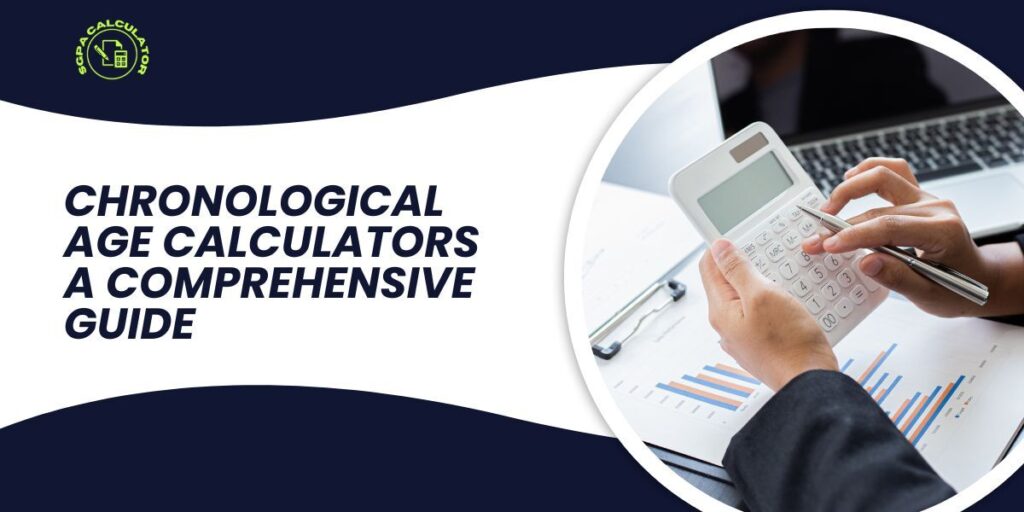In our modern era, where time is a valuable asset and age holds significant implications in various aspects of life, understanding one’s chronological age becomes crucial. Chronological age refers to the actual amount of time a person has been alive, typically measured in years, months, and days from their date of birth. While the concept of chronological age seems straightforward, its calculation might involve complexities, especially when considering leap years, varying month lengths, and precise age calculations.
To simplify this process, technological advancements have led to the development of chronological age calculator. These tools provide an efficient and accurate means of determining one’s chronological age, considering various factors that might affect the calculation. In this comprehensive guide, we delve into the intricacies of chronological age calculators, exploring their functionality, significance, and applications in different contexts.
Chronological Age Calculation
Before delving into the specifics of chronological age calculators, it’s essential to grasp the fundamentals of chronological age calculation. At its core, calculating chronological age involves determining the difference between the current date and an individual’s date of birth. This calculation typically yields the number of years a person has lived, with additional precision possible by considering months and days.
However, the calculation isn’t always straightforward due to factors such as leap years and varying month lengths. Leap years, occurring every four years to synchronize the calendar year with the solar year, add an extra day to the month of February. Additionally, months have varying lengths, with some containing 30 or 31 days. These complexities can make manual age calculation prone to errors, necessitating the use of specialized tools like chronological age calculators.
Use Calculator: SGPA Calculator
Functionality of Chronological Age Calculators
Chronological age calculators streamline the process of determining an individual’s age by automating the calculation based on inputted data. These calculators typically require the user to input their date of birth along with the current date. Using this information, the calculator employs algorithms to accurately calculate the person’s chronological age, factoring in leap years, month lengths, and any other relevant considerations.
The functionality of chronological age calculators can vary, with some offering basic age calculation and others providing more advanced features. Advanced calculators may allow users to account for specific time zones, cultural considerations, or alternative calendar systems, catering to diverse global needs. Additionally, some calculators may provide insights into life expectancy, age-related milestones, or demographic trends based on the calculated age.
Significance and Applications of Chronological Age Calculators
Chronological age calculators hold significant importance across various domains, ranging from healthcare and education to finance and demographics. Here are some key applications:
Healthcare: In healthcare settings, accurate age determination is crucial for medical assessments, treatment planning, and determining eligibility for certain procedures or medications. Chronological age calculators assist healthcare professionals in precisely determining patients’ ages, ensuring appropriate care delivery.
Education: In educational settings, particularly in schools and universities, age often determines grade placement, eligibility for academic programs, and participation in age-restricted activities. Chronological age calculators help educators and administrators verify students’ ages and make informed decisions regarding their academic journeys.
Finance and Insurance: Chronological age plays a significant role in financial planning, retirement calculations, and insurance premium assessments. Chronological age calculators aid individuals and financial professionals in making informed decisions regarding investments, retirement savings, and insurance coverage.
Legal and Administrative Purposes: Age verification is essential in various legal and administrative proceedings, such as age-related legal responsibilities, employment eligibility, and age-specific regulations. Chronological age calculators provide a reliable means of verifying individuals’ ages, facilitating compliance with legal requirements.
Use Calculator: CGPA Calculator
Types of Chronological Age Calculators
Chronological age calculators come in various types, catering to different needs and preferences. Some common types include:
Online Calculators: Web-based chronological age calculators are accessible through internet browsers, allowing users to input their date of birth and obtain their chronological age instantly. These calculators are convenient and widely available, making them popular choices for quick age verification.
Mobile Apps: Chronological age calculator apps are available for smartphones and tablets, offering on-the-go age calculation capabilities. These apps may provide additional features such as age tracking, milestone notifications, and personalized insights based on age-related data.
Specialized Software: Some industries or professions may utilize specialized software that incorporates chronological age calculation functionality. For example, healthcare professionals may use electronic medical record systems with built-in age calculators tailored to clinical workflows.
Manual Calculators: While less common in the digital age, manual chronological age calculators, such as calendars and date calculation tables, still serve a purpose in situations where digital tools are unavailable or impractical.
Tips for Using Chronological Age Calculators Effectively
To make the most of chronological age calculators, consider the following tips:
Ensure Accurate Input: Double-check the inputted date of birth and current date to ensure accuracy in age calculation. Even minor errors can lead to significant discrepancies in the calculated age.
Account for Time Zones: When using online or software-based calculators across different time zones, consider adjusting the inputted dates accordingly to maintain accuracy, especially for international applications.
Stay Informed About Updates: Regularly check for updates or improvements to chronological age calculators, as software developers may release new versions with enhanced functionality or bug fixes.
Verify Results When Necessary: In critical or high-stakes situations, such as medical assessments or legal proceedings, consider verifying the calculated age through additional means to ensure accuracy and reliability.
Conclusion
Chronological age calculators represent a technological advancement that simplifies the process of determining an individual’s age with precision and efficiency. From healthcare and education to finance and legal affairs, these calculators find diverse applications, streamlining age verification processes and facilitating informed decision-making.
By understanding the functionality, significance, and various types of chronological age calculators, individuals and professionals can leverage these tools effectively in their respective domains. Whether accessed through online platforms, mobile apps, or specialized software, chronological age calculators empower users with the ability to ascertain age-related information reliably, contributing to enhanced efficiency and accuracy in a wide range of contexts.





